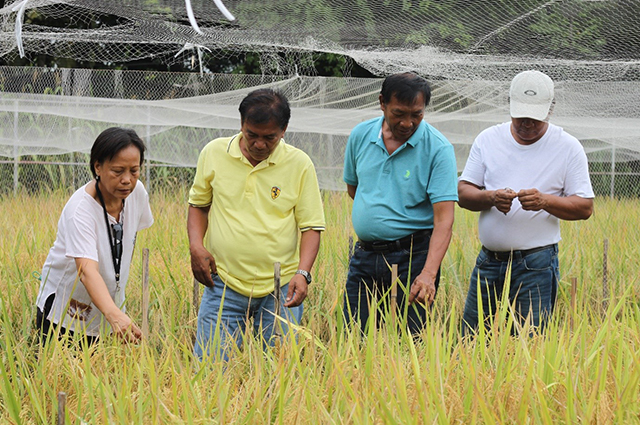
Members of the local Institutional Biosafety Committee regularly monitor implementation of Golden Rice activities and continuously evaluate compliance with the conditions set by the regulators.
“The Golden Rice Project has a noble mission and that is to alleviate vitamin A deficiency in the country. Stopping our research would mean depriving millions of Filipinos of another potential solution to this malnutrition,” Dr. Reynante Ordonio, scientist and Golden Rice co-project leader at the Philippine Rice Research Institute (PhilRice), said when asked on why Golden Rice research must continue.
Vitamin A deficiency remains a serious and persistent public health problem in the country. About 1.7 million children (6 mo – 5 yrs old), and half a million pregnant and nursing mothers are suffering from it. These people have greater risks to diseases, night and permanent blindness, and even death. While there are various existing interventions to address this problem, not all have reached them.
“Being our staple food, rice is more accessible to both rich and poor, young and old, making Golden Rice a more viable option to address this problem,” Dr. Ordonio noted.
Golden Rice is a kind of rice that contains beta carotene, which when ingested, is converted to vitamin A in the body as needed. An ordinary rice plant does not contain any beta carotene on its grain. Since beta carotene is essential in the production of vitamin A, scientists envisioned a way of putting it on the rice grain. Through genetic engineering, scientists Ingo Potrykus and Peter Beyer inserted two genes on the rice plant for beta carotene to be expressed on the grain. This breakthrough gave birth to the current version of Golden Rice that is now being studied in the Philippines.
There is no other way to create Golden Rice than though genetic engineering. As Dr. Ordonio explained, while nature has its own way of producing a beneficial crop species, this process may take more than a lifetime to get completed owing to sexual and genetic barriers existing among species that prevent them from exchanging useful traits. But through genetic engineering, these useful traits can be stacked into a particular plant, generating a useful crop that otherwise would have taken a million years to appear. “Genetic engineering, guided by biosafety rules and regulations, is therefore a modern innovation that can immensely contribute to a better quality of life in years to come,” he concluded.
There are two stages of field trials that the Golden Rice has to undergo. First is the confined field trial (CFT) to determine the agronomic performance of the crop and advance the breeding lines. Prior to the trial, permits are secured and public consultations are conducted by the team. In compliance to the biosafety guideline as required, the CFT is conducted inside a special transgenic facility. It is secured with fences to ensure that no stray animal can enter and destroy the Golden Rice plants. Access to the site is limited to people approved and authorized by the Department of Science and Technology – Biosafety Committee (DOST-BC). The CFT is strictly monitored by the DOST-BC, which will also assess data that will be generated from it. With their guidance, the Institutional Biosafety Committee (IBC) also helps ensure that all protocols on biosafety are followed while the CFT is ongoing.
The second stage is the multi-location field trial (MLT). It is being done to evaluate the agronomic and product performance of Golden Rice under Philippine field conditions. Moreover, it is needed to produce the grains and other plant materials that will be used for the various tests required by Department of Agriculture – Bureau of Plant Industry (DA-BPI) to complete the biosafety data requirements for Golden Rice. The grains produced in the MLT could also be used for the bio-efficacy trial if a biosafety approval is secured from the government. With prior permit and public consultations, the MLT are being strictly monitored by DA-BPI with the help of the IBC, which ensures all protocols on biosafety are followed while the field test is ongoing. DA-BPI would also assess the data that will be gathered from the field tests.
Golden Rice will only be made available to farmers and consumers once all regulatory requirements have been made and all evaluations have been passed. If Golden Rice is approved by national regulators, a study would be conducted to determine whether or not daily consumption of Golden Rice improves vitamin A status. If proven to be efficacious, the next step of the project would be to design and test a delivery program to ensure that Golden Rice reaches farmers and consumers who are most in need.
Golden Rice has a very high potential to complement current interventions in addressing vitamin A deficiency. “Rest assured that safety, efficacy, and affordability are prioritized as we develop this variety,” ascertained Dr. Ordonio.




